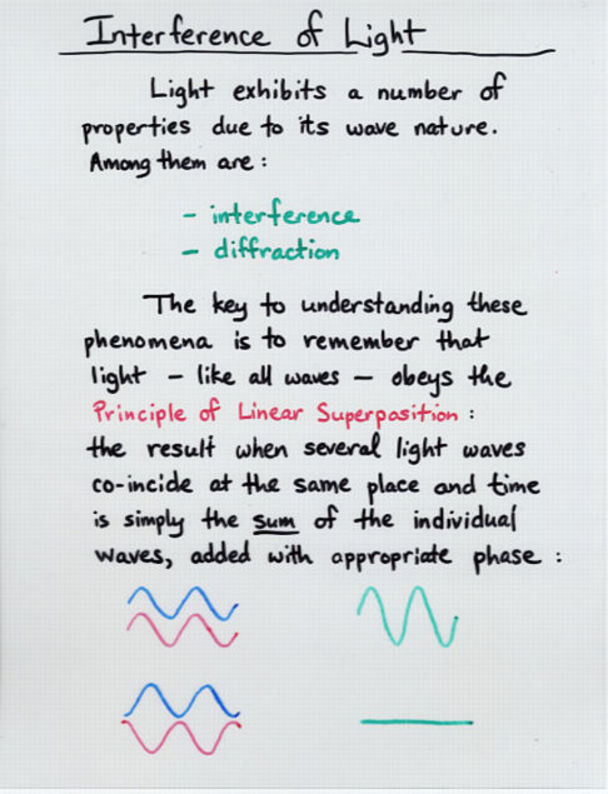 Viewgraph 1
Viewgraph 1
d sin(theta) = m lambda m = 0, 1, 2, ...
d sin(theta) = (m + 1/2) lambda m = 0, 1, 2, ...
 Viewgraph 1
Viewgraph 1
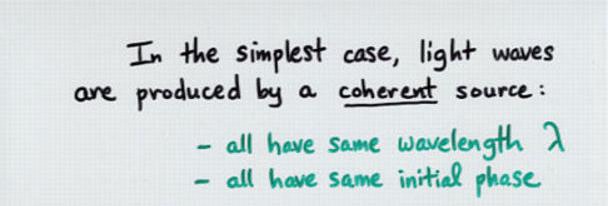 Viewgraph 2a
Viewgraph 2a
Q: What type of light source produces
coherent light waves?
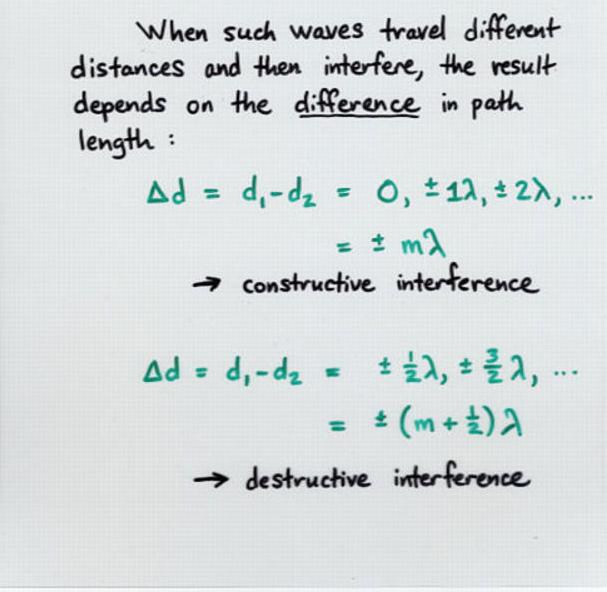 Viewgraph 2b
Viewgraph 2b
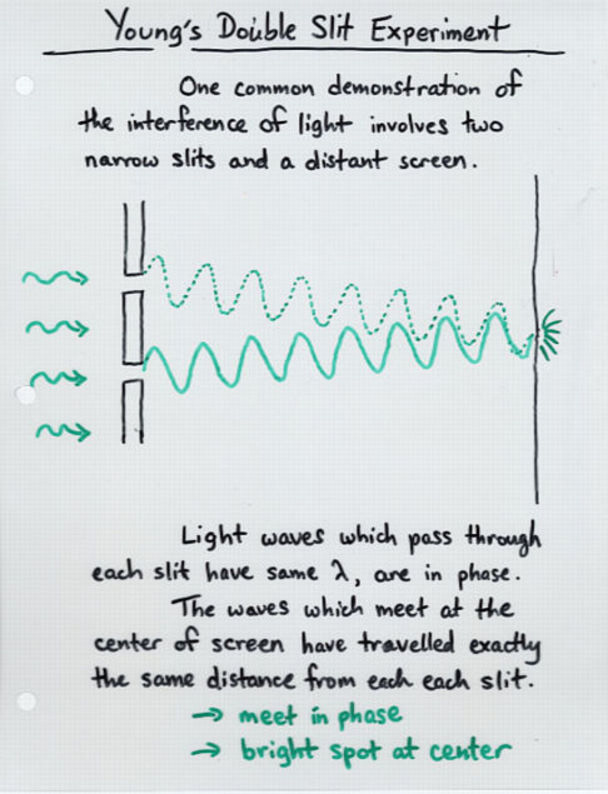 Viewgraph 3
Viewgraph 3
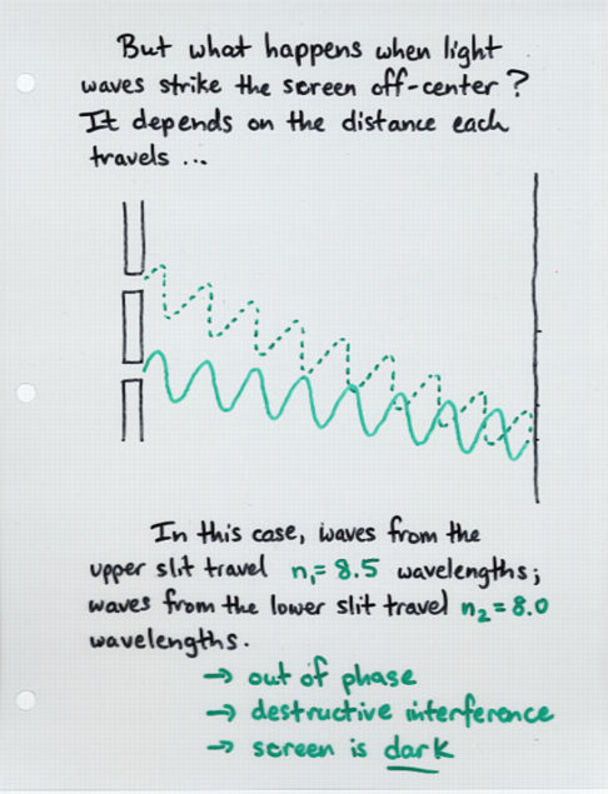 Viewgraph 4
Viewgraph 4
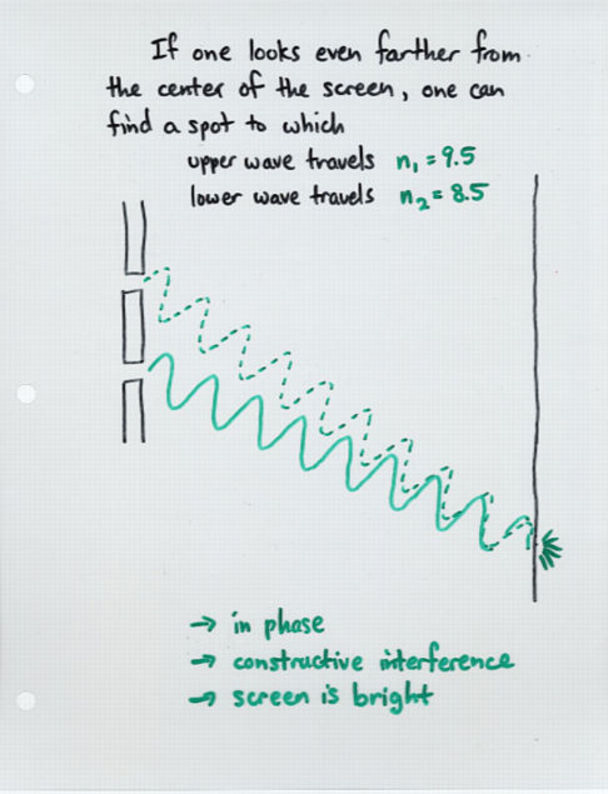 Viewgraph 5
Viewgraph 5
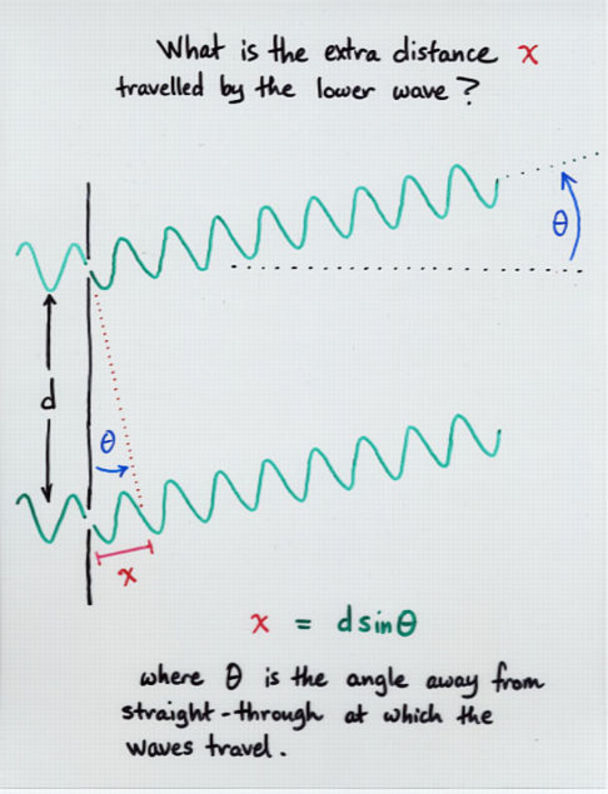 Viewgraph 6
Viewgraph 6
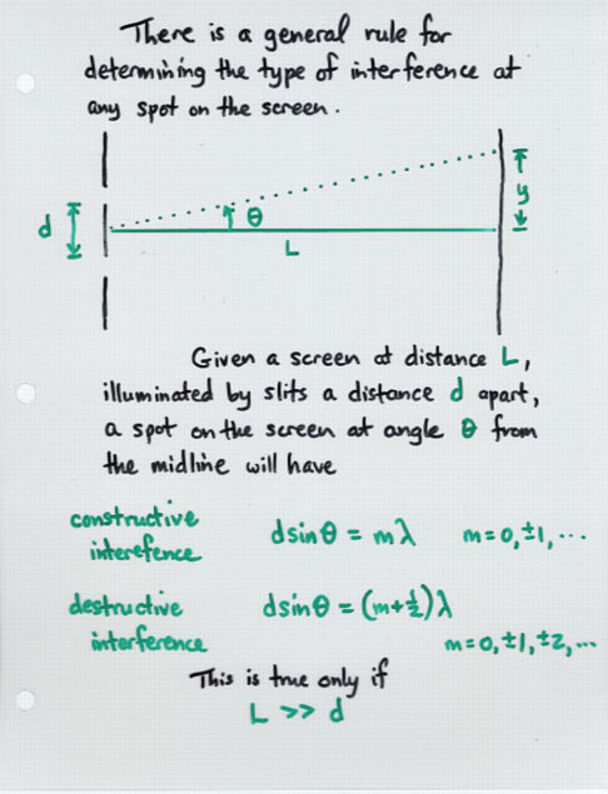 Viewgraph 7
Viewgraph 7
Joe shines a blue light of wavelength 450 nm
through a pair of slits which are 0.2 mm apart.
Q: Find three angles at which Joe will find
a bright spot on the distant wall.
Q: Find three angles at which Joe will find
a dark spot on the distant wall.
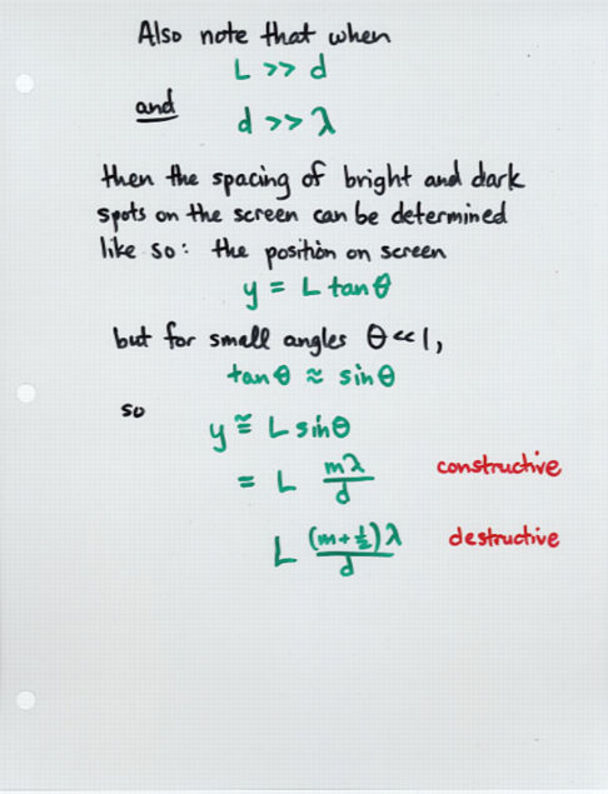 Viewgraph 8
Viewgraph 8
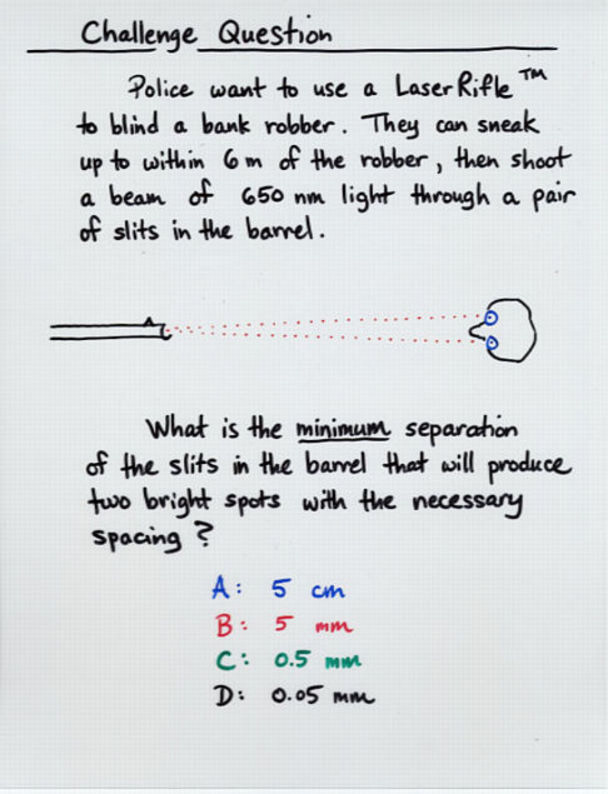 Viewgraph 9
Viewgraph 9
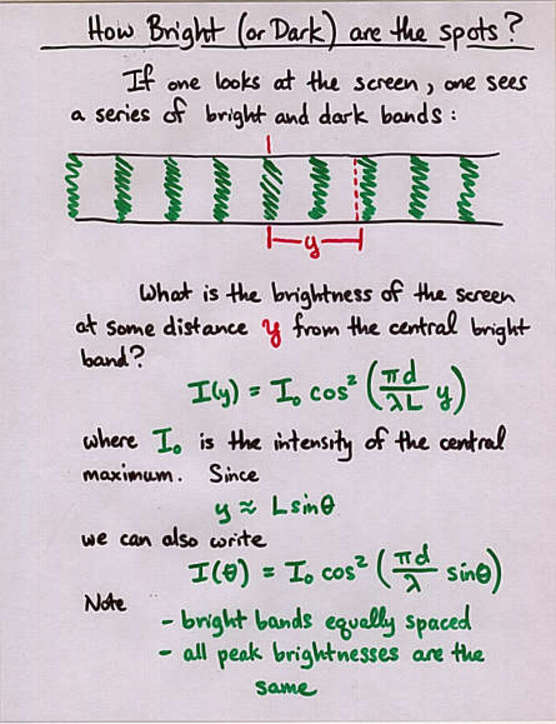 Viewgraph 8A
Viewgraph 8A